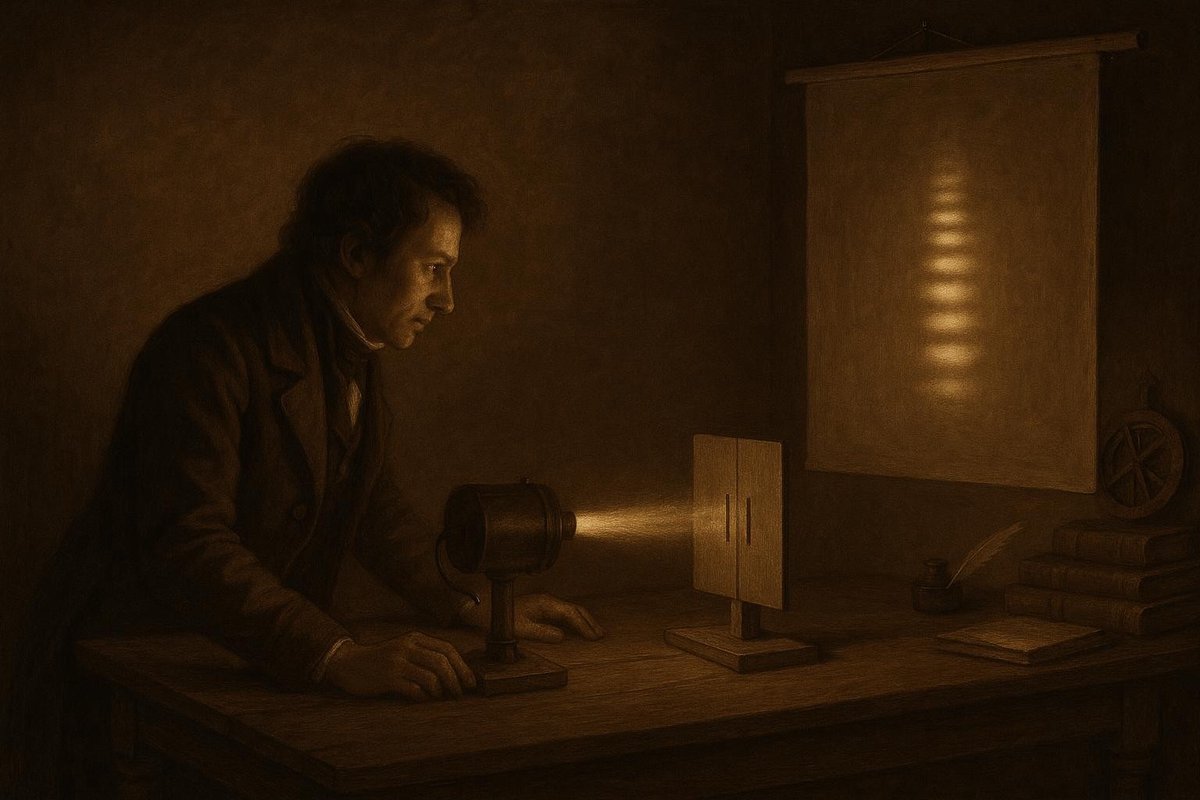
Hypothesis & Context: A Conundrum of Light
In the early 1800s, light was at the center of a heated debate. Was it composed of particles, as Newton suggested, or did it behave as a wave, as Huygens claimed? Interestingly, this question was not just academic; it had practical implications for optics and the burgeoning field of electromagnetism. Thomas Young, a British polymath, sought to settle the score with an elegant experiment that would test the very nature of light itself.
- The hypothesis: If light is a wave, it should exhibit interference patterns.
- Objective: To observe whether light behaves like particles or waves.
- Historical backdrop: Newton’s particle theory dominated the scene.
Young’s curiosity was piqued by the lack of experimental evidence for wave behavior. The cultural context of the Enlightenment—a period ripe with scientific inquiry and skepticism—provided the perfect environment for such a revolutionary investigation. Young’s bold move was akin to challenging the status quo, paving the way for a new understanding of physics. He believed that if he could demonstrate interference patterns, it would confirm the wave theory, offering a fresh perspective on how we perceive reality.
Setup & Method: Crafting the Double-Slit Experiment
The setting for Young’s experiment was simple yet ingenious. Picture a dark room illuminated by a single light source aimed at a barrier with two closely spaced slits. Behind this barrier, a screen was positioned to capture the light that passed through. The elegance of this design lay in its simplicity—a testament to the power of minimalistic methodology in revealing profound truths.
- Setup: A light source, a barrier with two slits, and a screen to record results.
- Key instruments: A monochromatic light source and a precision-made slit diaphragm.
- Procedure: Light passes through the slits, striking a screen to form patterns.
Why two slits? This arrangement was crucial for observing interference patterns. When light waves pass through the slits, they overlap and, depending on their phase alignment, create bands of light and dark. This was not merely an academic exercise; it was a challenge to Newtonian orthodoxy. The experiment was conducted with meticulous care to ensure the results reflected true wave behavior, embodying the scientific spirit of the era.
Results & Reactions: Waves or Particles?
The moment of truth came when Young observed the screen. To his delight, a series of alternating light and dark fringes appeared, reminiscent of ripples on a pond. This interference pattern was a visual confirmation of the wave theory, contradicting the particle-centric view that dominated the time.
- Observations: Interference patterns of light and dark bands.
- Immediate reaction: Enthusiastic discussions and debates in scientific circles.
- Quotable insight: “Light exhibits wave-like behavior.” – Thomas Young.
Young’s experiment did more than just support the wave theory; it revolutionized physics. While some contemporaries were skeptical, the implications were undeniable. The experiment became a cornerstone for future quantum mechanics, challenging scientists to reconsider the dual nature of light. As time went on, the double-slit setup would be revisited with electrons and other particles, revealing fundamental truths about the quantum world.
Implications: Unveiling Quantum Mysteries
The double-slit experiment opened the floodgates to a new era of physics. Beyond confirming wave behavior, it laid the groundwork for understanding quantum mechanics’ complex landscape. The experiment demystified concepts like wave-particle duality, hinting at the profound and sometimes paradoxical nature of quantum phenomena.
- Key takeaway: Light can behave as both a wave and a particle.
- Broader impact: Set the stage for quantum theory development.
- Historical significance: A pivotal moment that reshaped scientific thought.
No wonder this experiment is often heralded as a cornerstone of modern science. Its implications extend beyond physics, influencing philosophy and even our understanding of reality. The experiment continues to inspire curiosity, inviting us to question the very fabric of the universe. How can something be two things at once? This enigma remains at the heart of quantum mechanics, challenging us to look deeper and think broader.
As we wrap up, the Double-Slit Experiment serves as a reminder of the power of inquiry and the beauty of science. It teaches us that the simplest setups can lead to the most profound insights. Young’s legacy persists, encouraging scientists to explore and redefine our understanding of the world.
Fuel Someone Else’s Curiosity
Share this story with friends or colleagues who love scientific mysteries. Invite them to ponder the dual nature of light and the ongoing quest to understand the quantum realm. Let’s continue to fuel curiosity and celebrate the spirit of exploration that defines us as human beings.

Leave a Reply